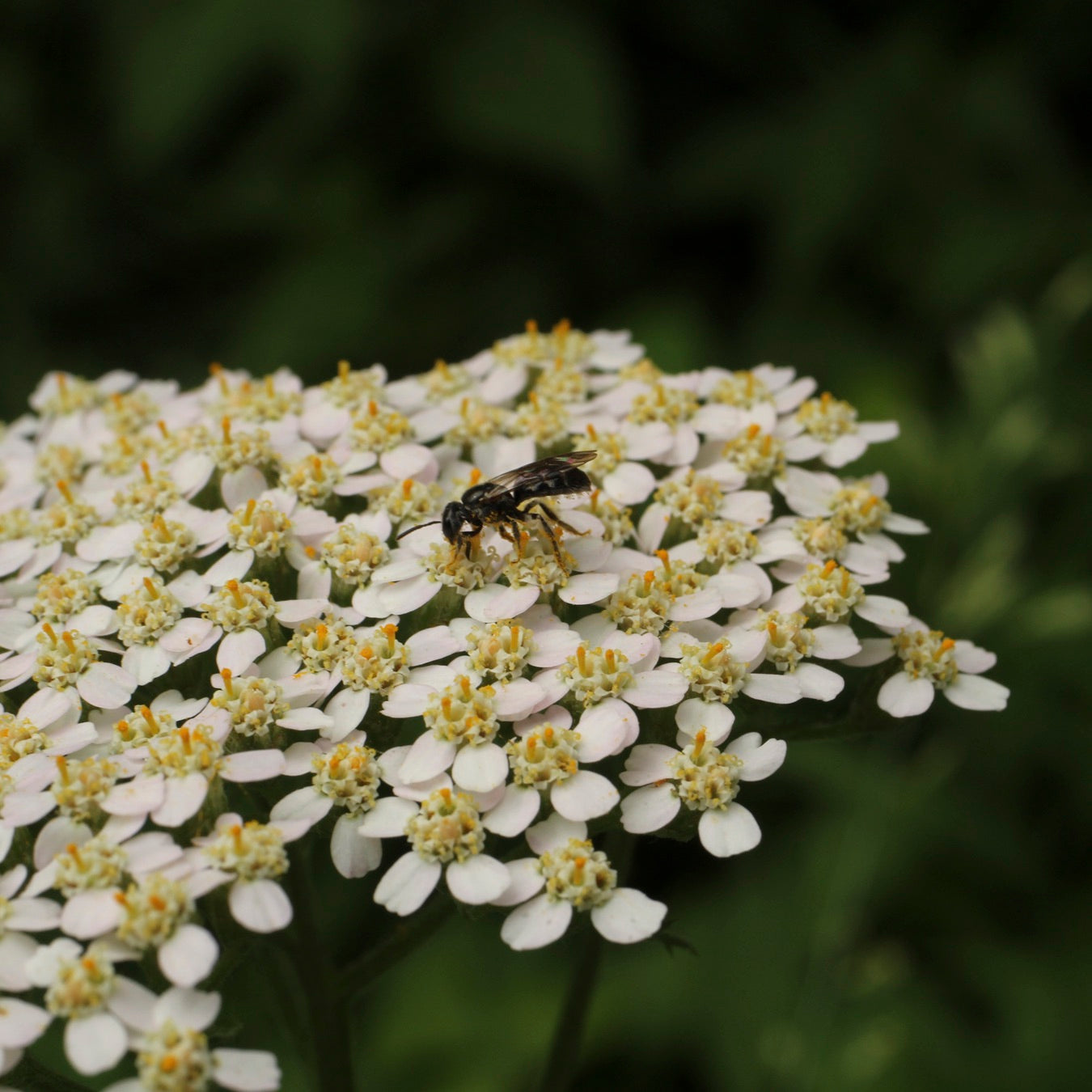Common yarrow
Achillea millefolium
Achillea millefolium
Couldn't load pickup availability
Sun/shade: Full sun
Soil moisture: Dry to medium
Height: 2'
Flowering period: June to August
Deer resistance: High
When common yarrow grows in a dense patch, its finely-divided leaves form a lush carpet, like some kind of giant moss. Spreading via underground stems, the plant readily forms colonies which can function as a groundcover. Indeed, due to its ability to tolerate mowing, common yarrow is sometimes utilized as a lawn substitute. When left uncut, the plant grows to approximately 2 feet tall and produces flat-topped clusters of small white flowers which bloom for an exceptionally long time (June through August).
The plant’s flowers are especially attractive to pollinators with predatory or parasitic life stages, including tachinid flies, hover flies, wasps, and lady beetles. For this reason, common yarrow is quite valuable as a companion planting to vegetable gardens, where its insect visitors help control pest bugs such as aphids, thrips, stink bugs, and some caterpillar species. With a bloom period that starts fairly early in the year, common yarrow can help attract beneficial insects in advance of a pest outbreak.
In terms of growing conditions, common yarrow does best under full sunlight in soils of moderate to dry moisture. Due to its good drought tolerance, common yarrow is a nice choice for hot locations like tree lawns and other areas with limited water availability. Numerous flowers pair well with yarrow, thanks to the plant’s very long bloom period. Yellow species like lanceleaf coreopsis and pink species like purple coneflower can make for especially attractive complements. A native resident of NE Ohio meadows, roadsides, and vacant lots, common yarrow is a competitive species which can help prevent weed encroachment but which may also need to be kept in check from time to time due to its spreading habit.
Photos by Ashley Keesling.



